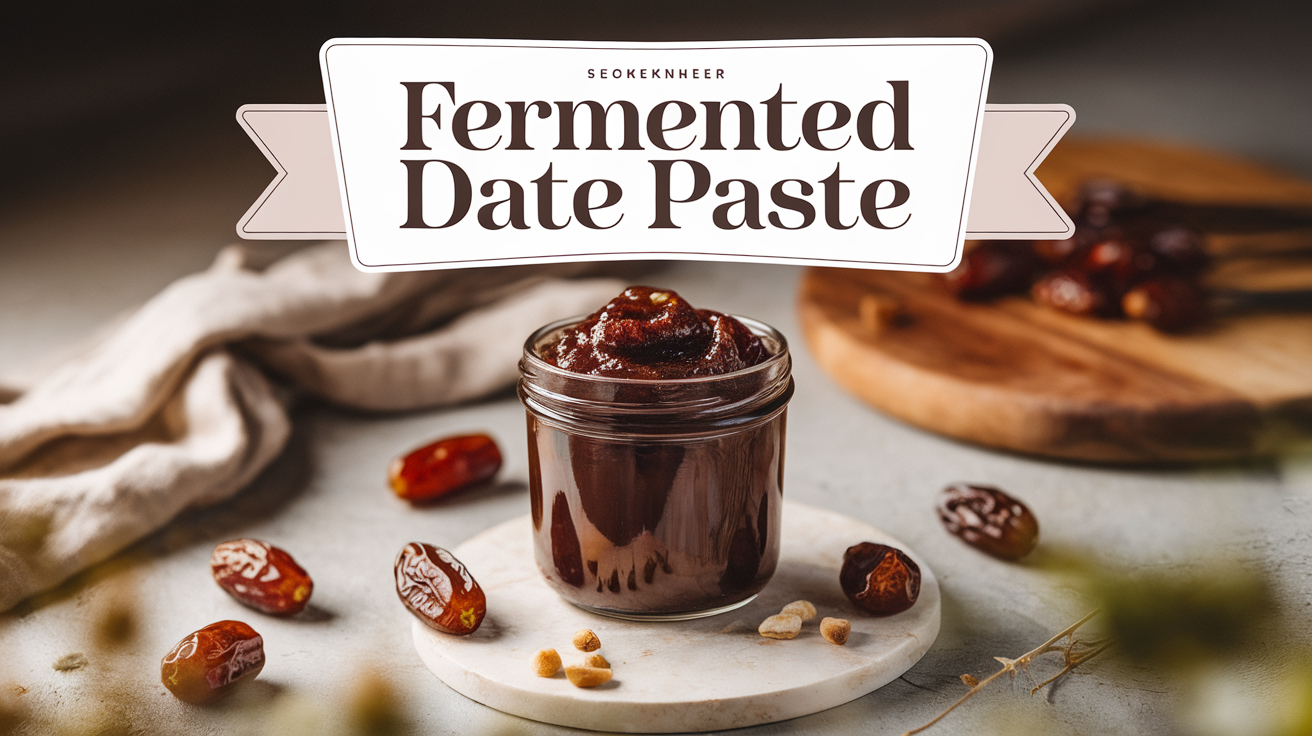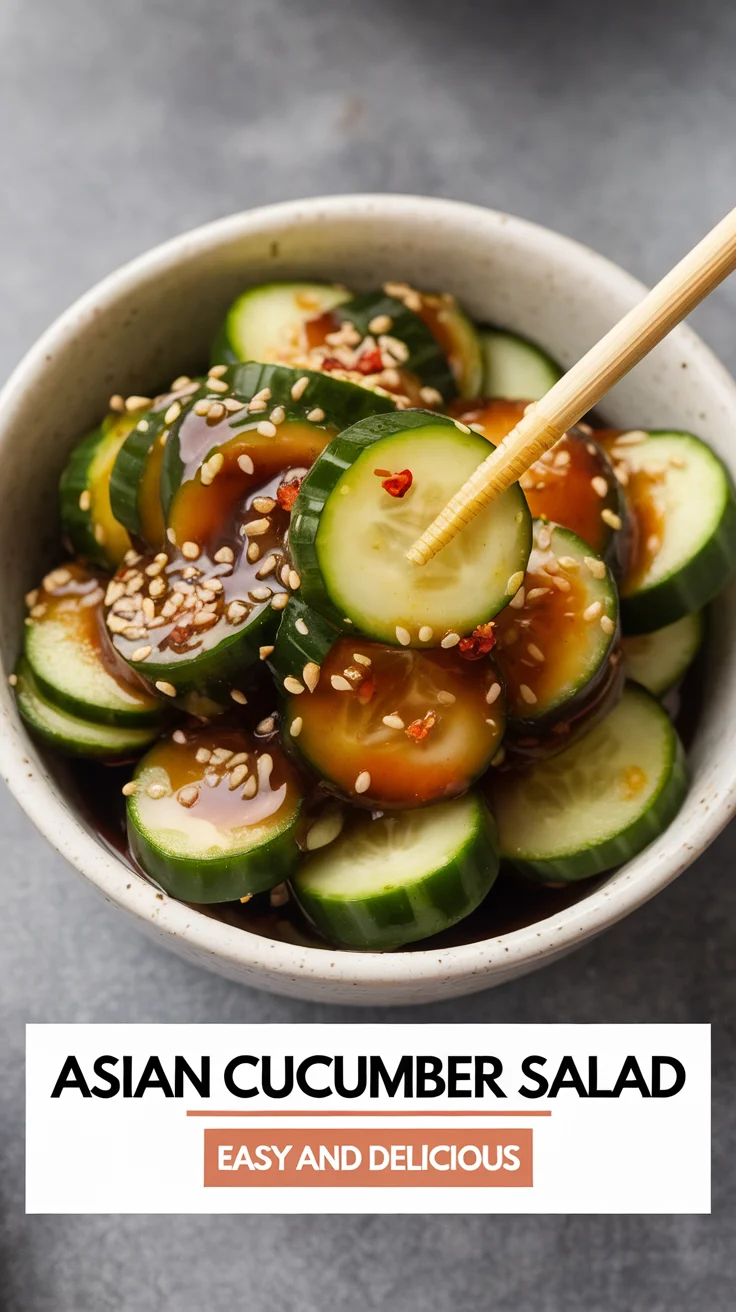Fermented foods have been a staple in various cultures around the world for centuries. From traditional kimchi in Korea to sauerkraut in Germany, fermentation offers a natural way to preserve food while enhancing its flavors and nutritional value. One lesser-known yet highly beneficial fermented food is Fermented Date Paste. Packed with probiotics, enzymes, and vitamins, fermented date paste can be a delicious and healthy addition to your diet. In this article, we’ll explore how to make fermented date paste, its benefits, and how it can be incorporated into your daily meals. Along the way, we’ll also delve into some related fermented foods and recipes like Ferment Apples, Fermented Mango, and Fermented Meat, providing a broader view of the fascinating world of fermentation.
What Is Fermented Date Paste?
Date paste is a naturally sweet and smooth puree made from dates, often used in recipes as a healthier alternative to sugar or artificial sweeteners. When fermented, the paste undergoes a natural process where beneficial bacteria and yeasts break down sugars and other compounds in the dates, creating a rich, tangy, and slightly effervescent product. This fermentation process not only enhances the flavor but also boosts the nutritional profile of the date paste, making it a powerful source of probiotics.
Probiotics are beneficial microorganisms that contribute to a healthy gut microbiome, improving digestion, immunity, and overall well-being. Fermented date paste, being a probiotic food recipe, provides these good bacteria along with the rich nutrients of dates, making it a perfect addition to a balanced diet.
Why Should You Consider Fermented Foods?
In recent years, there has been a surge in interest around fermented foods aesthetic, as more people recognize the importance of incorporating these foods into their daily lives. Fermentation has long been celebrated for its health benefits, which include:
- Improved Digestion: The beneficial bacteria found in fermented foods, such as those in fermented date paste, aid in breaking down food and making nutrients more accessible to the body.
- Gut Health: Probiotic-rich foods support a healthy balance of gut bacteria, which is essential for immune function, mental health, and digestion.
- Enhanced Nutrient Absorption: Fermentation increases the bioavailability of certain nutrients, such as vitamins and minerals, making them easier for the body to absorb.
- Boosted Immune System: By promoting a healthy gut microbiome, fermented foods help strengthen the body’s defense mechanisms.
- Unique Flavor Profiles: The fermentation process brings out complex, savory, and tangy flavors that can add depth to any dish.
Incorporating probiotic food recipes like fermented date paste into your diet can be a simple yet effective way to enhance your health while enjoying new, exciting flavors.
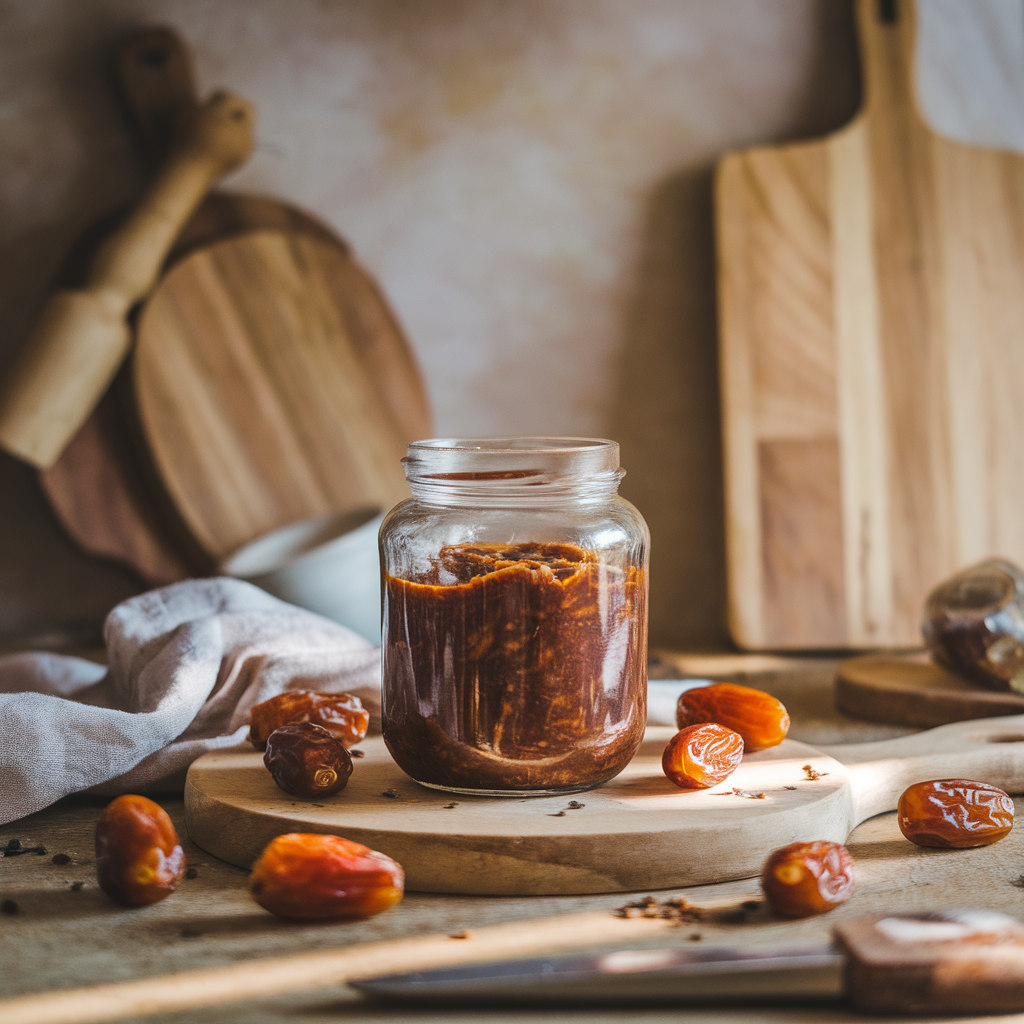
How to Make Fermented Date Paste
Making your own fermented date paste at home is easy and requires just a few basic ingredients. Here’s a simple recipe to get you started:
Ingredients:
- 1 cup dates (pitted)
- 1/4 cup water (or as needed)
- 1 tablespoon honey (optional)
- 1 tablespoon whey (optional but recommended for faster fermentation)
- 1/4 teaspoon sea salt (to enhance the flavor)
Instructions:
- Prepare the Dates: Start by soaking the dates in warm water for about 10-15 minutes to soften them. Once softened, drain the water and remove the pits if not already done.
- Blend the Dates: Add the soaked dates to a blender or food processor with the 1/4 cup water. Blend until smooth and creamy. If the paste is too thick, add more water, a tablespoon at a time, until you achieve a thick yet spreadable consistency.
- Optional Add-ins: For a touch of sweetness, you can add 1 tablespoon of honey, though this step is optional as dates themselves are naturally sweet. If you’re using whey (a natural source of probiotics), add it now. The whey helps jumpstart the fermentation process by introducing beneficial bacteria.
- Add Salt: Add the sea salt to the paste and blend again. The salt enhances the flavor and helps preserve the paste during fermentation.
- Ferment the Paste: Transfer the date paste into a clean, airtight jar, leaving some space at the top. Cover the jar loosely with a cloth or lid to allow air to flow in, or you can use a fermentation cap if you have one. Store the jar in a warm, dark place for about 3-5 days. The time required for fermentation may vary depending on the temperature and humidity in your area.
- Taste Test: After 3 days, check the paste by tasting it. It should have a tangy, fermented flavor with a slight effervescence. If you prefer a more pronounced tang, allow it to ferment for another day or two.
- Store: Once the date paste has fermented to your liking, transfer it to the refrigerator. The cold will slow down the fermentation process and help preserve the paste for up to 2 weeks.
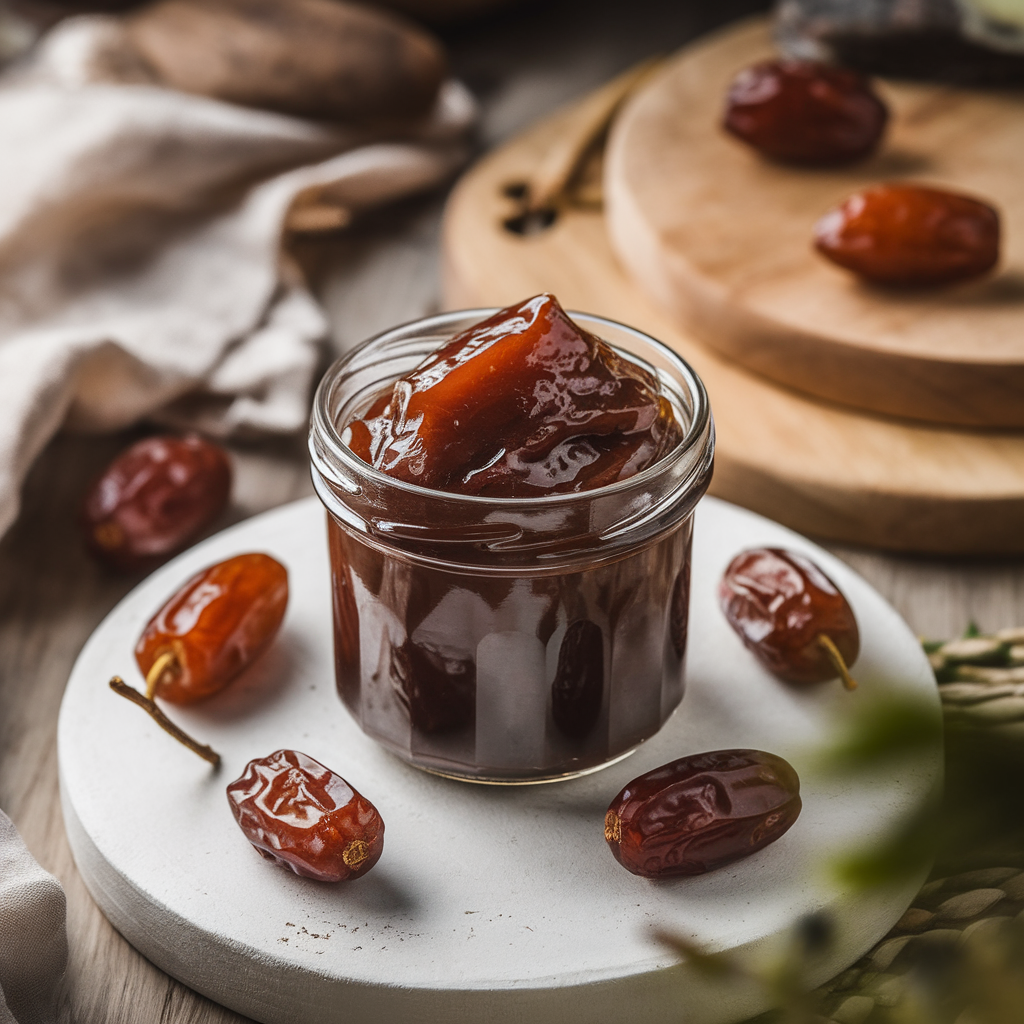
Health Benefits of Fermented Date Paste
Fermented date paste is not just a treat for the taste buds, but it also offers a variety of health benefits, including:
- Gut Health: The probiotics produced during the fermentation process can help balance the bacteria in your gut, promoting better digestion and regularity.
- Rich in Nutrients: Dates are packed with essential vitamins and minerals, including potassium, magnesium, iron, and vitamin B6. Fermentation can enhance the absorption of these nutrients, making them more accessible to the body.
- Improved Immune Function: The probiotics in fermented date paste can help strengthen the immune system by improving gut health, which is linked to overall immunity.
- Natural Sweetener: Unlike refined sugars, fermented date paste is a natural sweetener that can be used in recipes as an alternative to processed sugars, reducing the glycemic index of your dishes.
- Antioxidant Properties: Dates are rich in antioxidants, which help fight free radicals in the body and protect against oxidative stress. Fermentation may enhance the bioavailability of these antioxidants.
Fermented Mango: Another Tropical Treat
If you love fermented date paste, you might want to explore other fermented fruit recipes, such as fermented mango. Mangoes, like dates, are naturally sweet and packed with nutrients. When fermented, they undergo similar transformations, offering a tangy, probiotic-rich treat that can be used in smoothies, salads, or as a topping for yogurt.
The process for fermenting mango is quite similar to that of fermented date paste. Simply blend ripe mangoes with water, salt, and optional sweeteners or probiotics, then let them ferment for a few days. The result is a sweet, tangy, and probiotic-rich paste that can be enjoyed on its own or added to various dishes.
Fermented Apples: A Seasonal Delight
Ferment apples for a unique take on fermented fruit paste. Apples are another fruit that lends itself beautifully to fermentation. The natural sugars in apples are broken down by probiotics, resulting in a paste that’s both tangy and slightly sweet. Fermented apple paste can be used in baked goods, as a topping for toast, or even mixed into oatmeal.
To make fermented apple paste, peel and chop apples, blend them with water, and add a small amount of honey or sugar to encourage fermentation. Allow the mixture to sit in a warm place for 3-5 days before refrigerating. The result is a fruity, tangy paste with all the benefits of fermented foods.
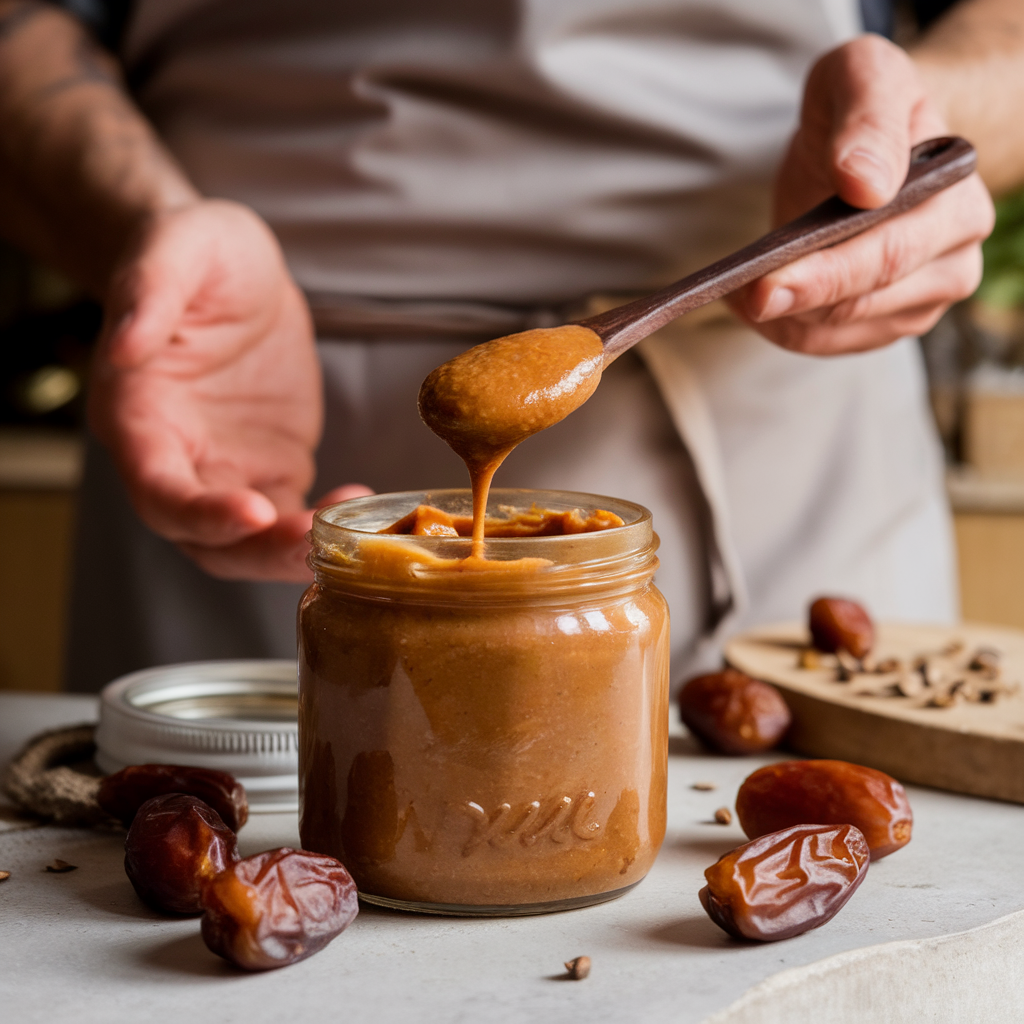
Fermented Meat: Exploring Protein-Rich Ferments
While fruits like dates, mangoes, and apples are common candidates for fermentation, you can also explore fermented meat as part of your probiotic journey. In various cultures, meats are fermented to preserve them, add flavor, and enhance their nutritional value.
Fermented meats, such as salami, prosciutto, and other cured meats, go through a controlled fermentation process where beneficial bacteria are used to break down proteins and fats. These meats are often enjoyed in small quantities, as the fermentation process imparts a tangy flavor and creates a unique texture that adds depth to dishes.
Incorporating Fermented Date Paste into Recipes
Fermented date paste is incredibly versatile and can be used in a variety of dishes. Here are a few ways you can incorporate it into your meals:
- Smoothies: Add a spoonful of fermented date paste to your smoothie for a natural sweetness and a probiotic boost.
- Baked Goods: Use fermented date paste as a natural sweetener in muffins, cakes, or cookies. It adds a unique flavor and helps reduce the need for refined sugars.
- Toppings: Spread fermented date paste on toast, pancakes, or waffles for a healthy and flavorful breakfast.
- Salad Dressings: Mix fermented date paste with olive oil, vinegar, and your favorite herbs to create a tangy salad dressing.
- Energy Balls: Combine fermented date paste with nuts, seeds, and coconut flakes to make nutrient-dense energy balls.
- Sauces and Marinades: Use fermented date paste as a base for sauces or marinades for meats, giving your dishes a complex, tangy flavor.
Conclusion
Fermented date paste is a delightful and nutritious food that combines the natural sweetness of dates with the health benefits of probiotics. By incorporating fermented foods like date paste into your diet, you can improve digestion, enhance your gut health, and enjoy a host of other health benefits. Whether you’re making fermented mango, fermenting apples, or experimenting with fermented meat, the world of fermentation offers endless possibilities for delicious and nutritious food. Give fermented date paste recipes a try and see how easy it is to add this probiotic-rich treat to your diet!
